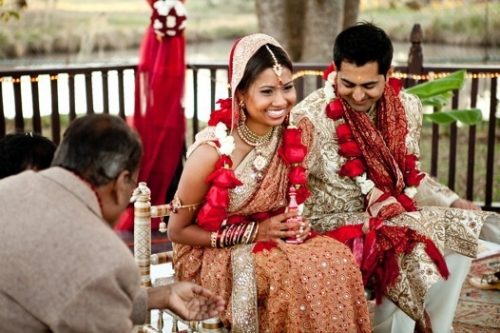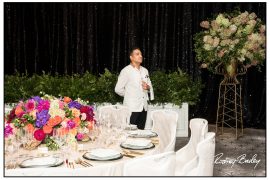No matter where you are in the world many cultures use tea as a way to connect with people. India is one of the largest growers and producers of tea. A large percentage of tea is used within India. Some of their popular teas are Assam, Darjeeling, and Masala Chai. Tea is viewed as a spiritual connection.
How incredible is it to be a part of a tradition that has been around from generation after generation! Indians are strong believers in ancient traditions and religion. When it comes to marriage, it’s one of the most important life changing events one can experience. Ancient traditions play such a huge role in the wedding. Vibrant colors and silk fabric are infamous for their wedding attire.
Traditionally, the bride’s family organizes the wedding ceremony. Indian weddings are known for their elaborate ceremonies. There are a variety of traditional celebrations that take place before the wedding:
One of the first celebrations is The Tilak customarily celebrated about a month before the wedding, which confirms the destiny of the couple. All the men in the bride’s family visit the home of the groom to ensure he is ready for marriage. The priest chants a mantra to ask the lord for a blessing. A symbol of a Tilak is drawn on his forehead.
Next celebration is The Engagement or Ring ceremony; the two families, bride and groom get together to exchange gold rings. This exchange means the bride and groom are hooked. The families then exchange gifts of fruits and sweets then enjoy a lunch or dinner party.
Sangeet Ceremony is all about the dance and music. It was only for women and given by the bride’s family, but today the groom’s family participates as well. The ceremony is enjoyed by all the ladies who laugh, joke and bout good times together.
Now follows the Mehndi Ceremony, where friends and family celebrate with the bride and her family. The Mehndi is applied to the bride’s hands, arms, feet and legs. There’s a myth that the darker the Mehndi the more her husband will love her. The bride-to-be isn’t allowed to leave the house.
Var Mala Ceremony is an ancient practice still done today. It’s a main wedding day event. The bride and groom exchange garlands. The mother of the bride meets the groom at the door with a pooja thali. She marks his forehead with tilak (made from sandalwood paste, turmeric or charcoal) then she performs arati (a religious ritual) to bless him.
Mandap Ceremony is also done on the day of the wedding; all important rituals occur during this ceremony. Because parents strongly believe that marriage is a one-time thing, they plan extravagant weddings. This ceremony is performed under a canopy supported by four pillars that represent the four parents.
Vidai Ceremony is a post wedding ceremony that happens after the wedding. The parents of the bride follow her, along with other family members, outside where they wish her well. Her father takes her to the car and presents her to her groom.
A Reception Ceremony is the last festivity, after Vidai Ceremony, given by the groom’s family. The groom invites most of his family and a few close family members of the bride, to introduce the bride to his family. Scrumptious foods and great music are prepared for friends and family to enjoy.
Sources:
http://theeverygirl.com/everygirl-wedding-sarah-das/
http://www.pinterest.com/pin/496521927641121218/







